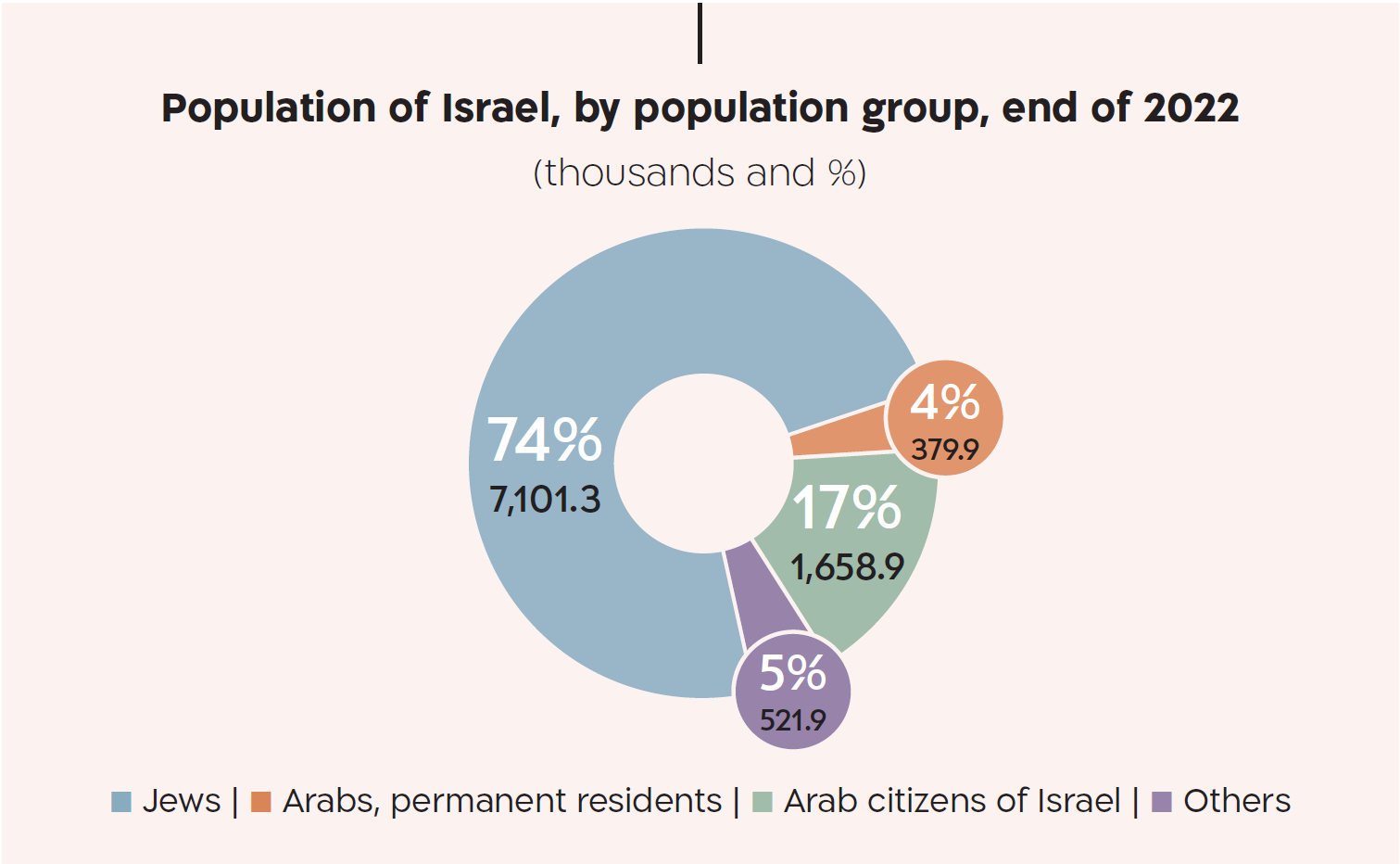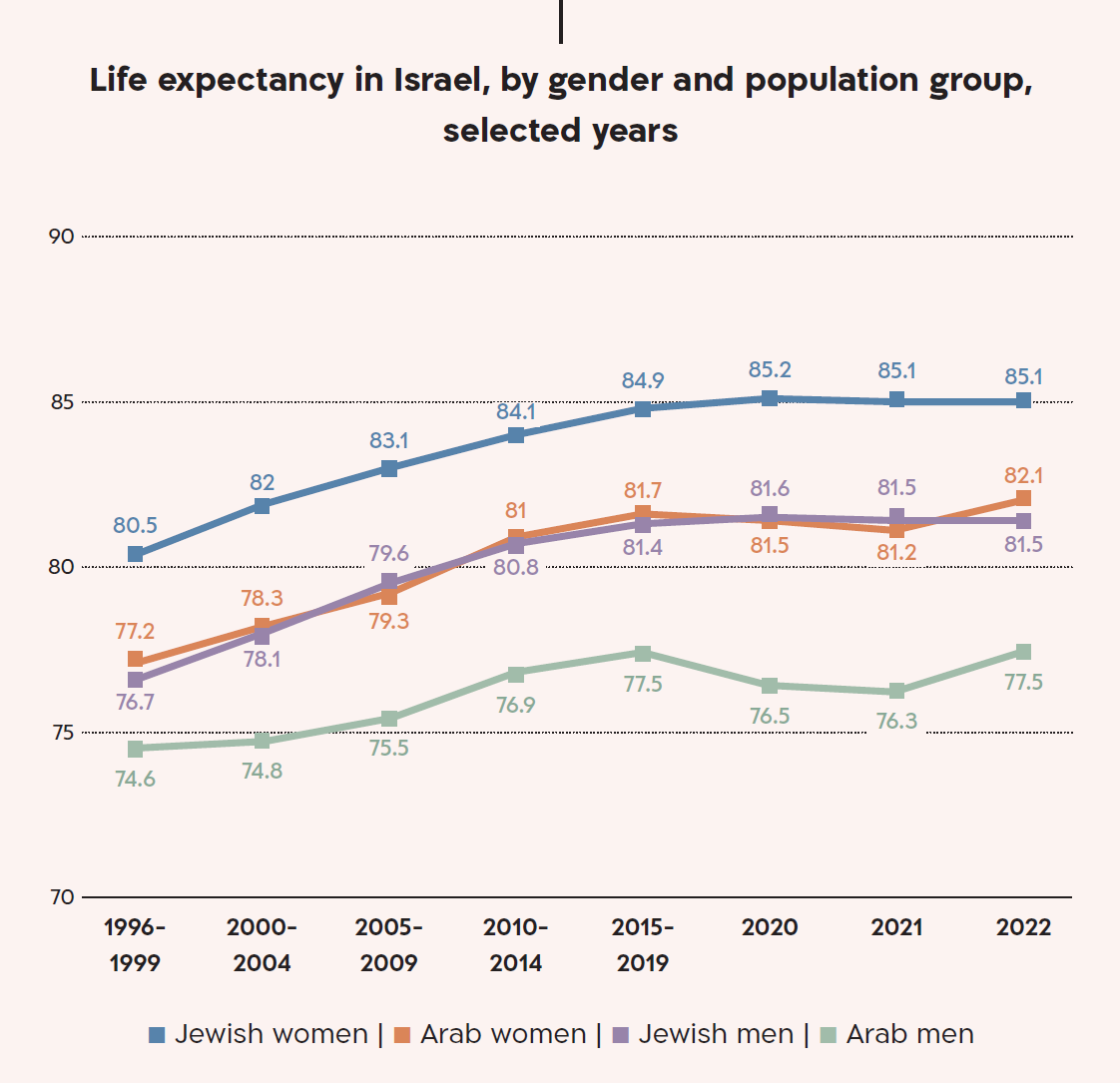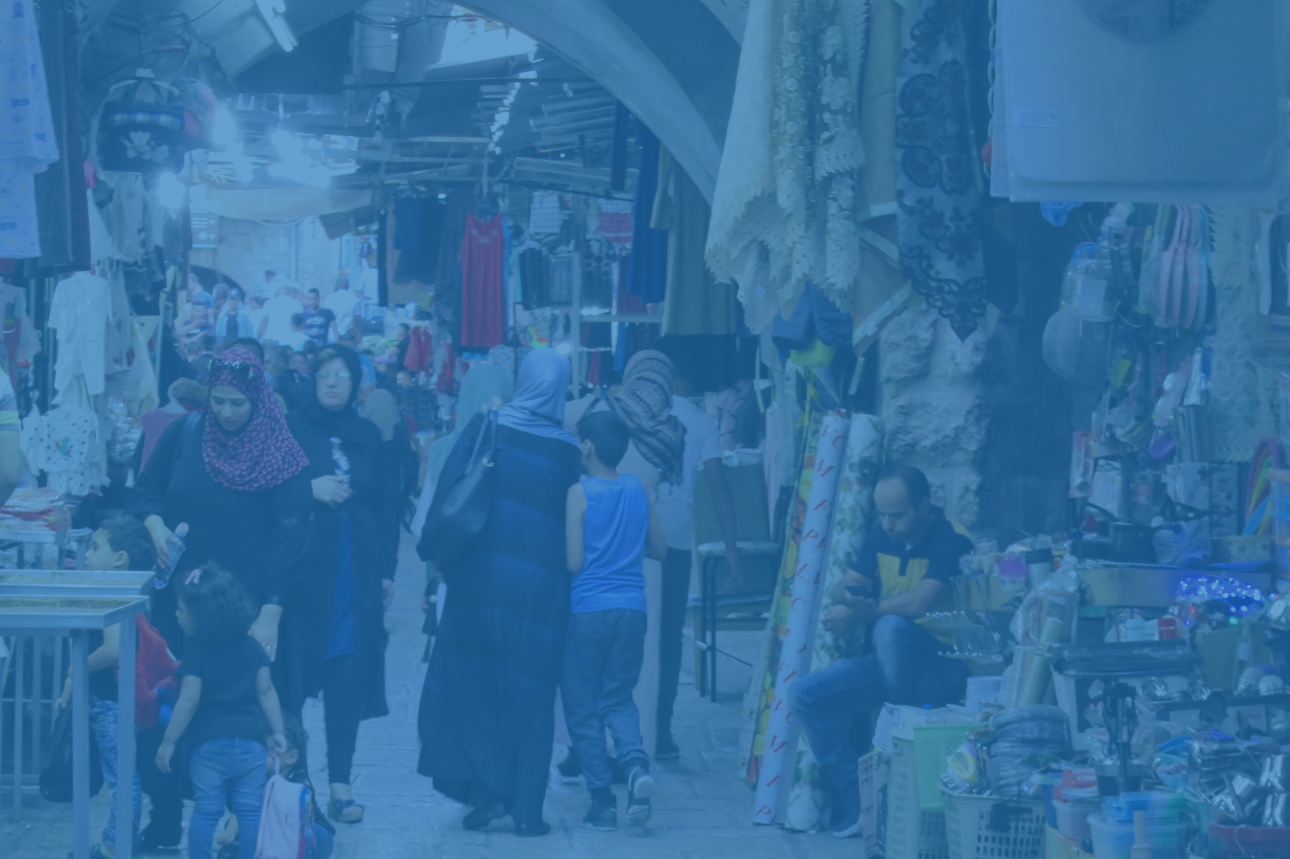Demography
Chapter 1
According to data from Israel’s Central Bureau of Statistics (CBS), the Arab population in Israel numbered around 2.04 million at the end of 2022, constituting 21.1% of the total population. This percentage comprises 17.2% who hold Israeli citizenship, and 3.9% with the status of “permanent resident,” who live in East Jerusalem.
There are 163 localities in Israel (including 13 cities and 68 local councils) in which the entire population are Arab Israelis. The two largest Arab cities are Rahat (with approximately 79,000 residents) and Nazareth (approximately 78,000 residents). The majority of Arab citizens are Muslim (83.2%), and the remainder are Druze (9.1%) and Christian (7.7%).
Half the Arab population (not including East Jerusalem) live in the north of Israel, and the rest reside in two main regions: the Negev and the “Triangle” (an area in central Israel containing the major Arab towns of Tayibe, Tira, Baqa al-Gharbiyye, and Umm el-Fahm).



The overall birth rate for Arab women in 2022 (2.75 live births per woman) was lower than the equivalent rate for Jewish women (3.03, including among the ultra-Orthodox sector). The highest birth rate was found among Muslim women (2.92), followed by Druze (1.85) and Christian women (1.62).
Due to high birth rates in the past, the proportion of children under the age of 18 in Arab society (36.8% of the population) remains higher than the equivalent proportion among Jewish Israelis (32.1%). The proportion of children among Muslims (38.5%) is higher than that among Druze (29.2%) and Christians (24.8%).

Between 2020 and 2022, the average rate of infant mortality among Arabs (5.1 per 1,000 live births) was more than twice as high as the equivalent rate among Jews (1.9). Within Arab society, the infant mortality rate among Muslims (5.3) was considerably higher than the rate among Druze (3.1) and much higher than the rate among Christians (1.9).
Life expectancy in Arab society has continued to rise, thanks to improvements in various health indicators, but there remains a significant gap between Arabs and Jews: Life expectancy for men and women in Arab society are now identical to life expectancy for men and women in Jewish society two decades ago.










